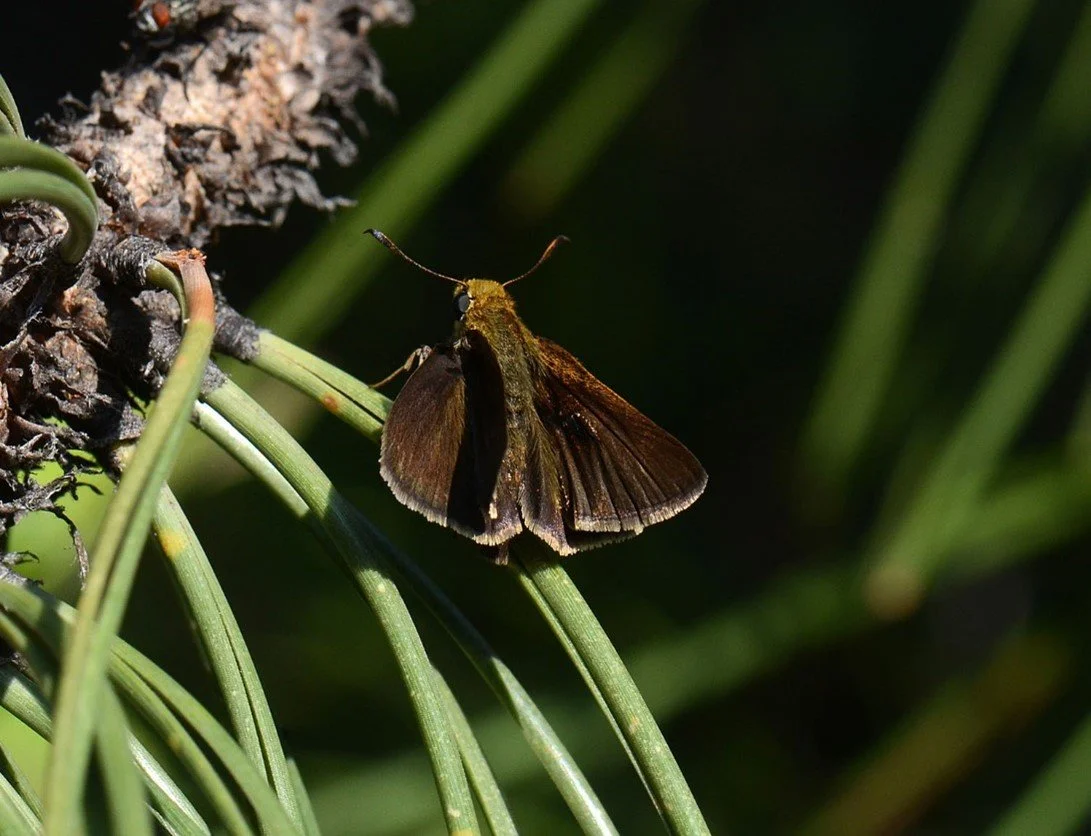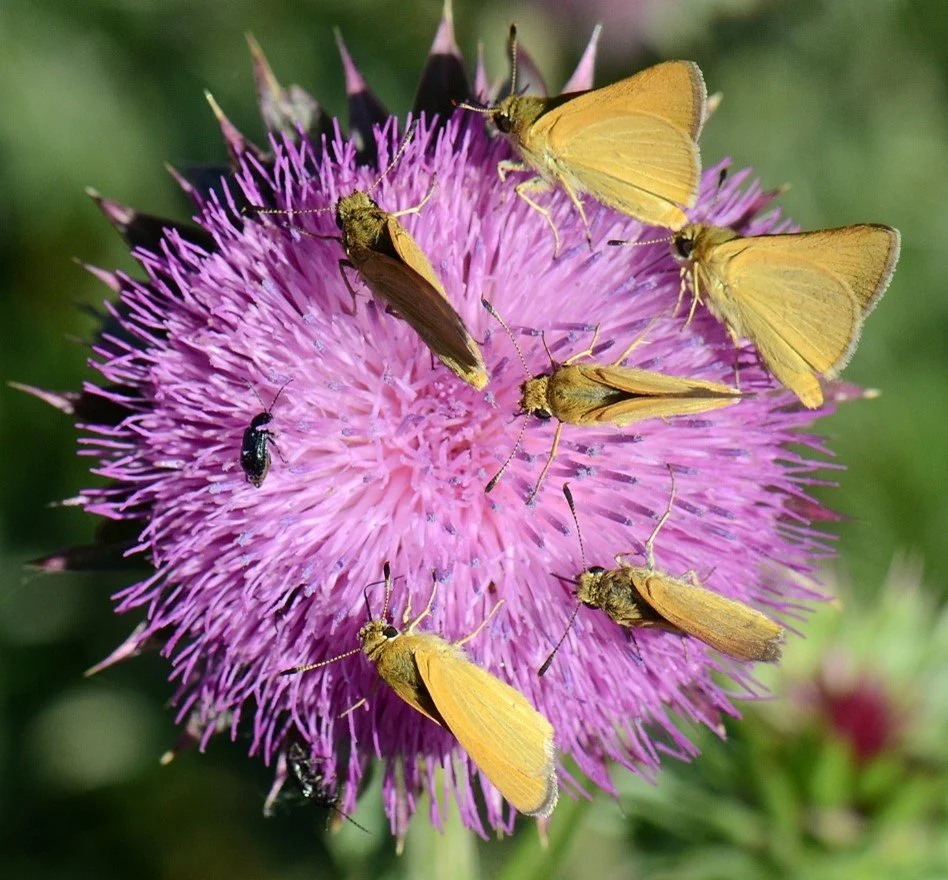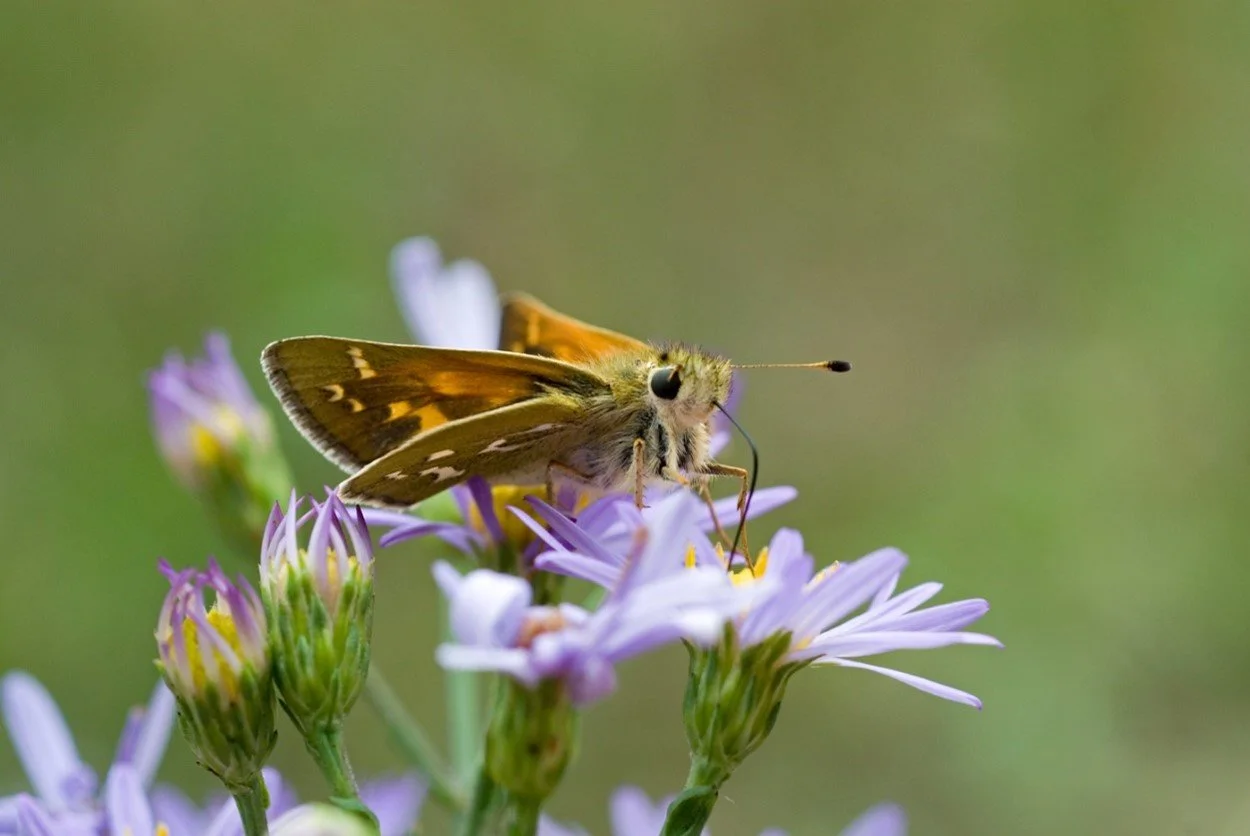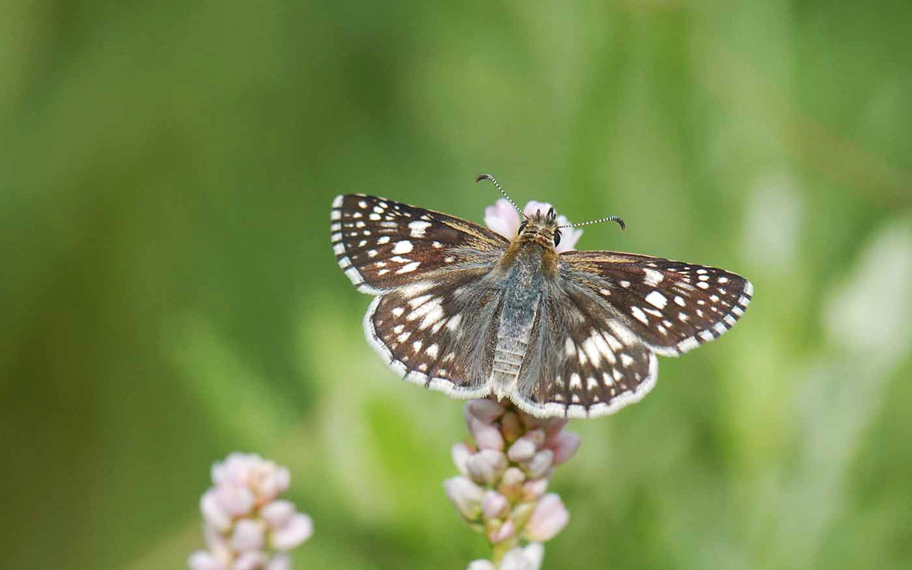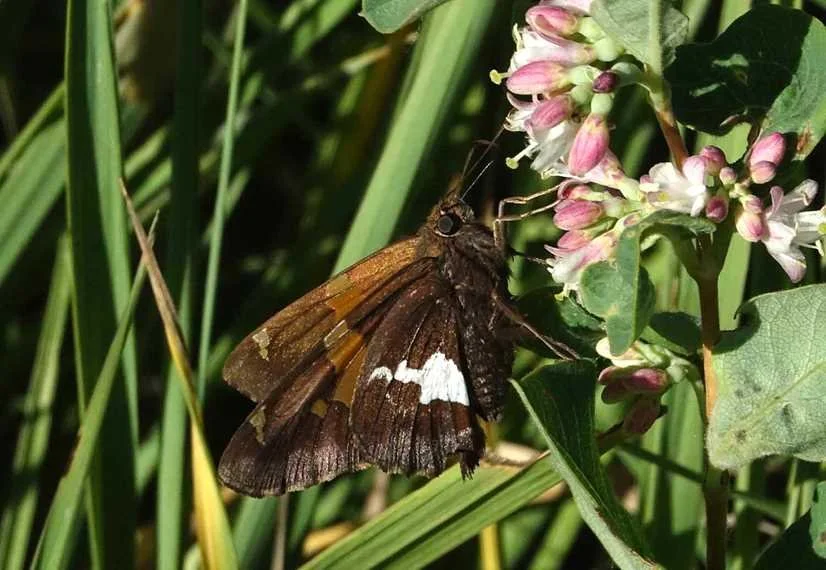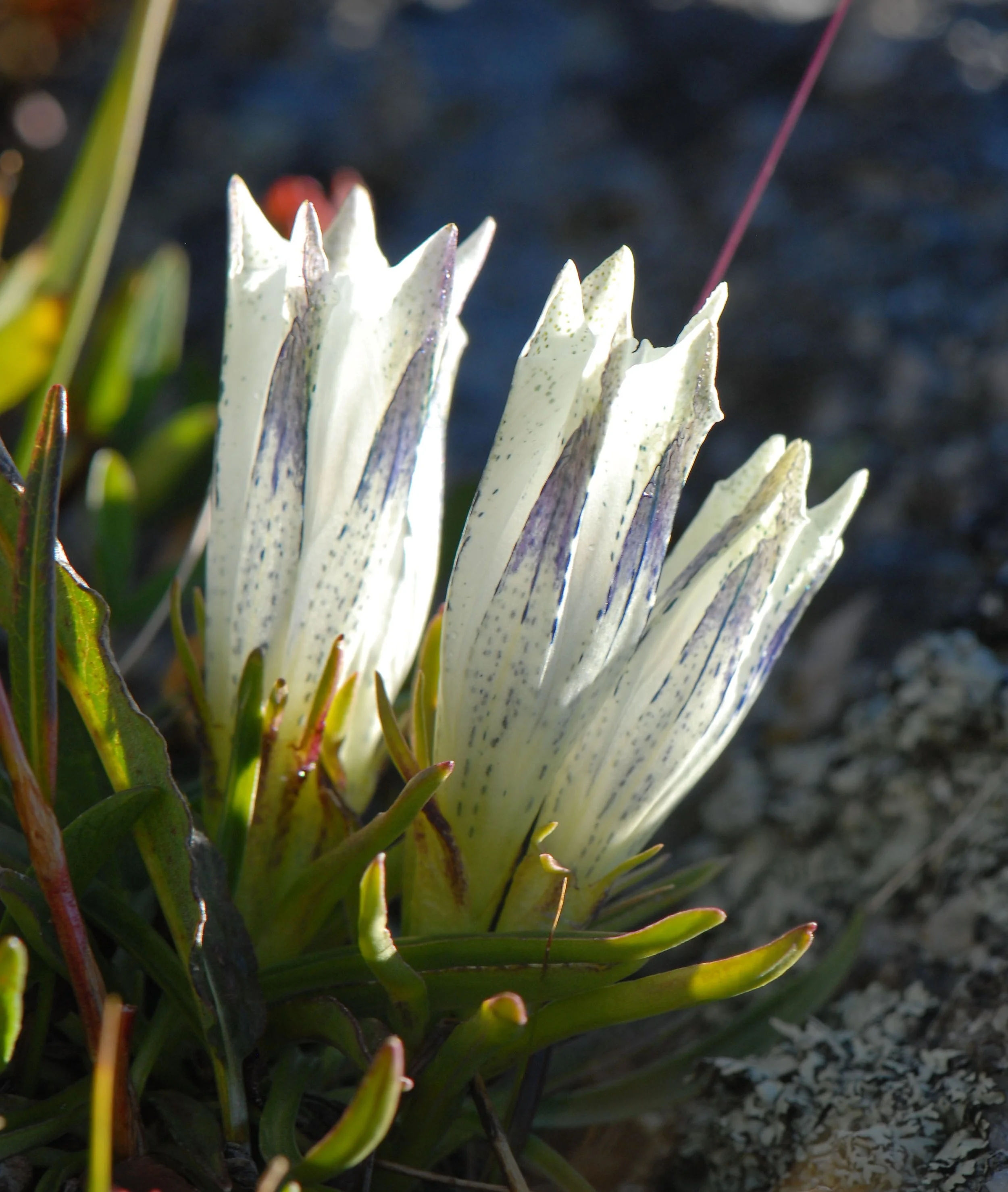August Nature Almanac: Skippers Flit through Mountain Meadows
Stephen Jones and Ruth Carol Cushman
All Photos by Stephen Jones
August 2024
While much of Boulder County suffers through our driest summer on record, butterflies gather in oases of greenery in our shaded canyons. On a recent hike in upper Gregory Canyon with a group of Boulder Open Space and Mountain Parks junior rangers, we counted 285 butterflies, including 100 acrobatic skippers, along a one-mile stretch of trail.
The tiny skippers seem particularly at home in these sun-dappled clearings, where the males dart back and forth while trying to impress potential mates. Females perch calmly on logs, wildflowers, or grass stems, testing the air with their antennae to sample the males' pheromones and assess their fitness. After finally choosing a partner and mating, each female deposits dozens of eggs on the underside of native grasses, sedges, or other host plants.
The name "skipper" derives from these tiny butterflies' erratic flight, which protects them from birds, dragonflies, and other predators while rendering them nearly invisible to most hikers. But once the skippers determine that we are just clumsy humans with no interest in consuming them, they become among the most approachable of butterflies.
Their doe-like eyes; plump, fuzzy bodies; and stacked, swept-back wings intrigue us. Are they really butterflies or some form of day-flying moth? Lepidopterists now place them in the family Hesperiidae within the order Lepidoptera (butterflies and moths). Members of this family tend to have short antennae with clubs that are bent at the ends, stout bodies, wide heads, and relatively small, uniquely shaped wings.
Skippers have evolved into more than 275 species in North America alone, comprising roughly one-third of all our butterflies. Identification can pose a challenge, and we often wait until we've taken a series of close-up photos and uploaded them to the computer before trying to sort through the dozens of similar-appearing species in Boulder County.
Fortunately, some of our most abundant species are easy to identify and photograph. Below are a few species that should remain active in foothills and mountain meadows into September.
Woodland Skippers perch on monarda and other wildflowers while waiting for a potential mate. The three black stigmas (sections of scent glands that produce pheromones) on each forewing distinguish them from other grass skippers, a large subfamily whose larvae often feed on native grasses. Note the hooks at the end of their antennae clubs and the doe-like eyes, two characteristics of most skippers.
Taxiles Skippers have bright orange wings with dark margins, which distinguish them from the closely related woodland skippers. Females can wait patiently in the sunlight for hours while assessing the fitness of a potential mate.
We found this dun skipper perching on a ponderosa pine needle, though they tend to lay their eggs on native sedges. Their name derives from their dull brownish color, but recently emerged individuals may have distinct white wing margins and gold tinting of their heads and wings.
Arogos skippers deposit their eggs on big bluestem and other tallgrasses, and they gather by the dozens on sunflowers and thistles during July and early August. Though fairly common in the lower foothills of Boulder County, they are thought to be threatened throughout the western plains by loss of native grasslands. Note the unmarked orange wings and white wing margins.
Western branded skippers are among several locally occurring grass skippers with intricate arrangements of white spots and chevrons on their wings. A clear photo and a good field guide (such as Jim Brock and Ken Kaufman's Butterflies of North America) are often necessary to distinguish among these similar-appearing wonders.
Common checkered-skippers are among the spreadwing skippers, species that when perched lack the "jet airplane-appearance" of other skippers. Inhabiting a variety of habitats from coast-to-coast, they are considered the most abundant and widespread skipper in North America.
Silver-spotted skippers stop us in our tracks with their relatively large size, graceful appearance, and striking silver patches. They lay their eggs on locusts, wisteria, and other legumes. This individual is sipping on snowberry blossoms, which attract legions of butterflies to our lower foothills canyons.
Janet Chu and Stephen Jones's booklet, Butterflies of the Colorado Front Range, is available online and from local booksellers.
Other August Events
Bottle gentians begin to bloom in the lower foothills, and arctic gentians bloom above treeline.
Arctic Gentian.
Chokecherries, a staple food of indigenous peoples of the mountains and plains, ripen, stimulating the holding of Sun Dances and other sacred ceremonies.
Shorebirds migrating southward stop over at mud flats at Union Reservoir, Lagerman Reservoir, and Sombrero Marsh.
Young Northern Harriers begin to disperse from nesting sites in wetlands surrounding Boulder Reservoir. This summer, three nests fledged at least eight young.
Colorado chipmunks born in late May or June appear above ground.
Juvenile Colorado chipmunks.
If our midsummer monsoon ever makes it to Colorado (areas of southern Arizona received nearly 10" of rain during the last two weeks of July), mushrooms should flourish in our mountain forests.



